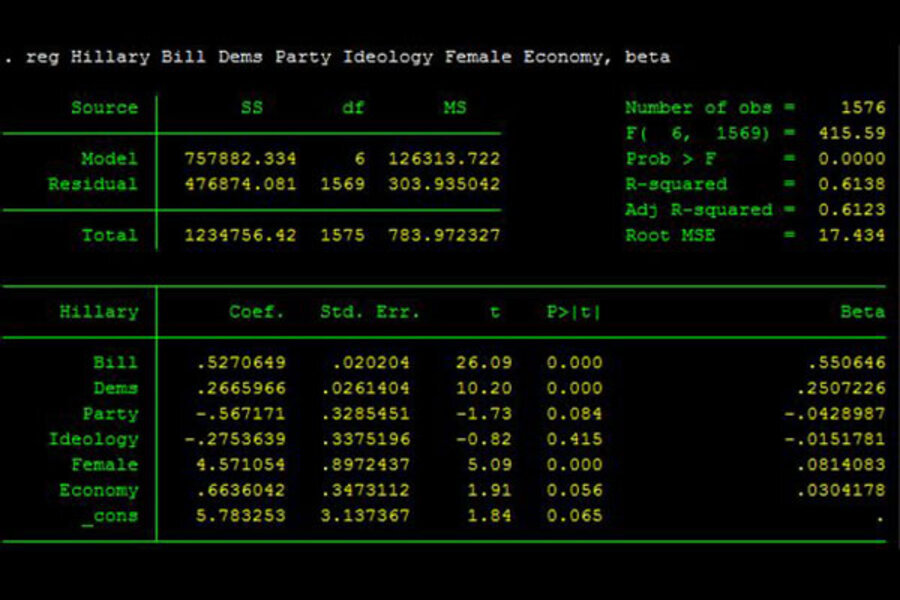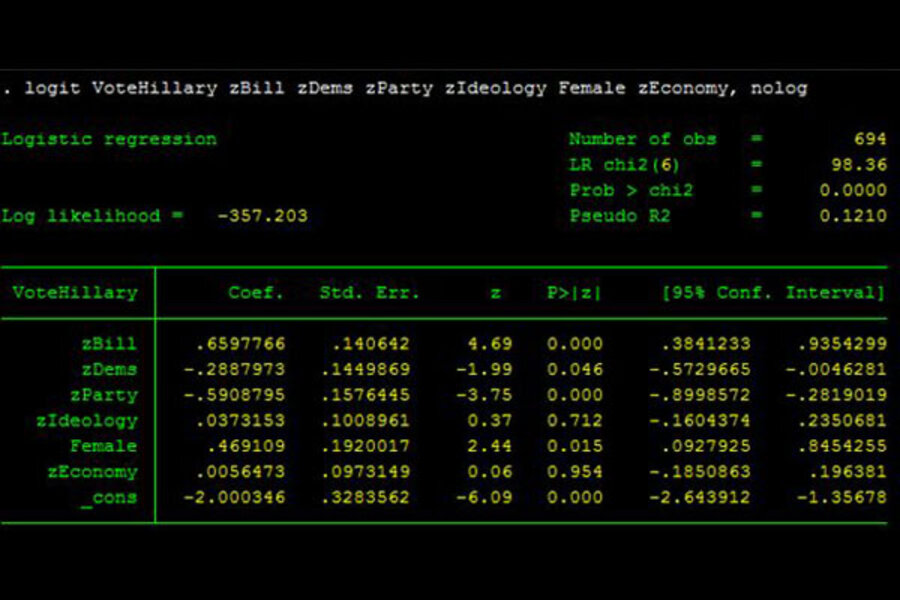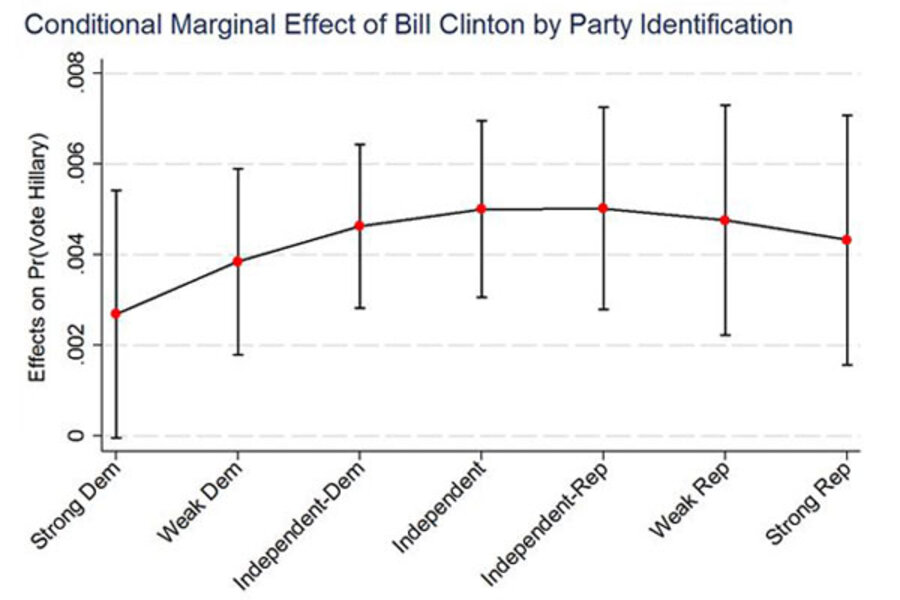How should Hillary Clinton deploy Bill in 2016?
Loading...
In a recent post, I explored whether it’s possible to quantify Bill’s value to Hillary Clinton’s campaign (see here). In other words: Do voters reward (and punish) Mrs. Clinton based on their opinions of her husband? If so, it could have major implications for the outcome of the 2016 presidential election.
Looking at survey data from the American National Elections Study, the answer would seem to be an emphatic “yes.” Even when we take into consideration various reasons why voters would hold a favorable or unfavorable opinion of Hillary Clinton (such as party identification, ideology, gender, etc.) we find that Bill has a discernible positive effect on Hillary’s approval rating.
Perhaps most notable is just how much Bill Clinton matters according to the results. In particular, the data suggest that when Bill’s approval rating increases by 1 unit, Hillary’s approval increases by just under 1/2 in the same direction.
For today’s post, we’re going to reexamine the same topic with additional data. Indeed, the prior post left some important questions unanswered.
First, the original analysis examined opinions of Bill and Hillary Clinton in 2000. It’s certainly possible that the so-called “Bill effect” is unique to this particular time period (perhaps because Bill Clinton was president at the time and the economy was performing quite well). Simply put, we want to know if the finding is generalizable to more recent conditions.
Fortunately, the ANES asked the same questions in 2008 (when Hillary Clinton ran for the Democratic nomination) as it did in 2000 (when she was first lady). So, we can easily run the same analysis as in the prior post and see if the “Bill effect” holds. You can see the results in the chart above.
I’m skipping the statistical details, but the regression model confirms the existence of the “Bill effect” in 2008. As with the prior results (see here), it would seem that that there is a very strong positive relationship between opinions of both Clintons. It’s also the case that this effect is statistically significant.
But what about the act of voting? Isn’t this the most important outcome? So far, we’ve only looked at opinions of both Clintons.
Fortunately, the ANES asked respondents about their vote choice in the 2008 presidential primary. So, we can once again run the exact same analysis expect that, this time, we’re modeling whether someone voted for Hillary Clinton. (Click on the right arrow on the chart above to see the second chart.)
According to the results, the “Bill effect” exists with respect to voting behavior as well. In fact, the results indicate that Bill Clinton’s effect is larger in magnitude than any other predictor. Keep in mind that this is specific to the 2008 presidential primary, where we would expect the effect of economic conditions and party identification to be lower.
According to the results, a 25-point increase in Bill’s favorability rating (out of 100) increases a respondent’s probability of voting for Hillary Clinton by about 10 percent. Substantively, therefore, the effect is meaningful (as it was earlier).
Lastly, perhaps there are differences in who is susceptible to the “Bill effect.” For example, it may be interesting to know whether Democrats, Republicans, or Independents are most likely to be persuaded to vote for (or against) Hillary Clinton based on their opinions of Bill Clinton.
I created the third chart above by simply interacting Bill Clinton’s favorability with a respondent’s party identification and re-running the analysis. Higher values in the figure (in red) indicate a larger “Bill effect” for respondents in the respective group. We see two interesting patterns.
First and foremost, Bill Clinton’s effect on a respondent’s probability of voting for Hillary Clinton is strongest for Independents. Roughly speaking, there appears to be a curvilinear effect. For “weak” and “strong” partisans on both sides of the aisle, the effect is smaller in a relative sense.
Second, Bill Clinton’s effect on Hillary’s vote probability is larger for Republicans than it is for Democrats. In fact, for “strong Democrats,” Bill Clinton has “no effect” at the 0.05 level (as revealed by the fact that the confidence interval just crosses the zero line).
Based on the results, we might conclude that Hillary Clinton’s campaign should get Bill in front of independents and Republicans rather than steadfast Democrats. Indeed, Bill could be a potent weapon in 2016… if used properly.







